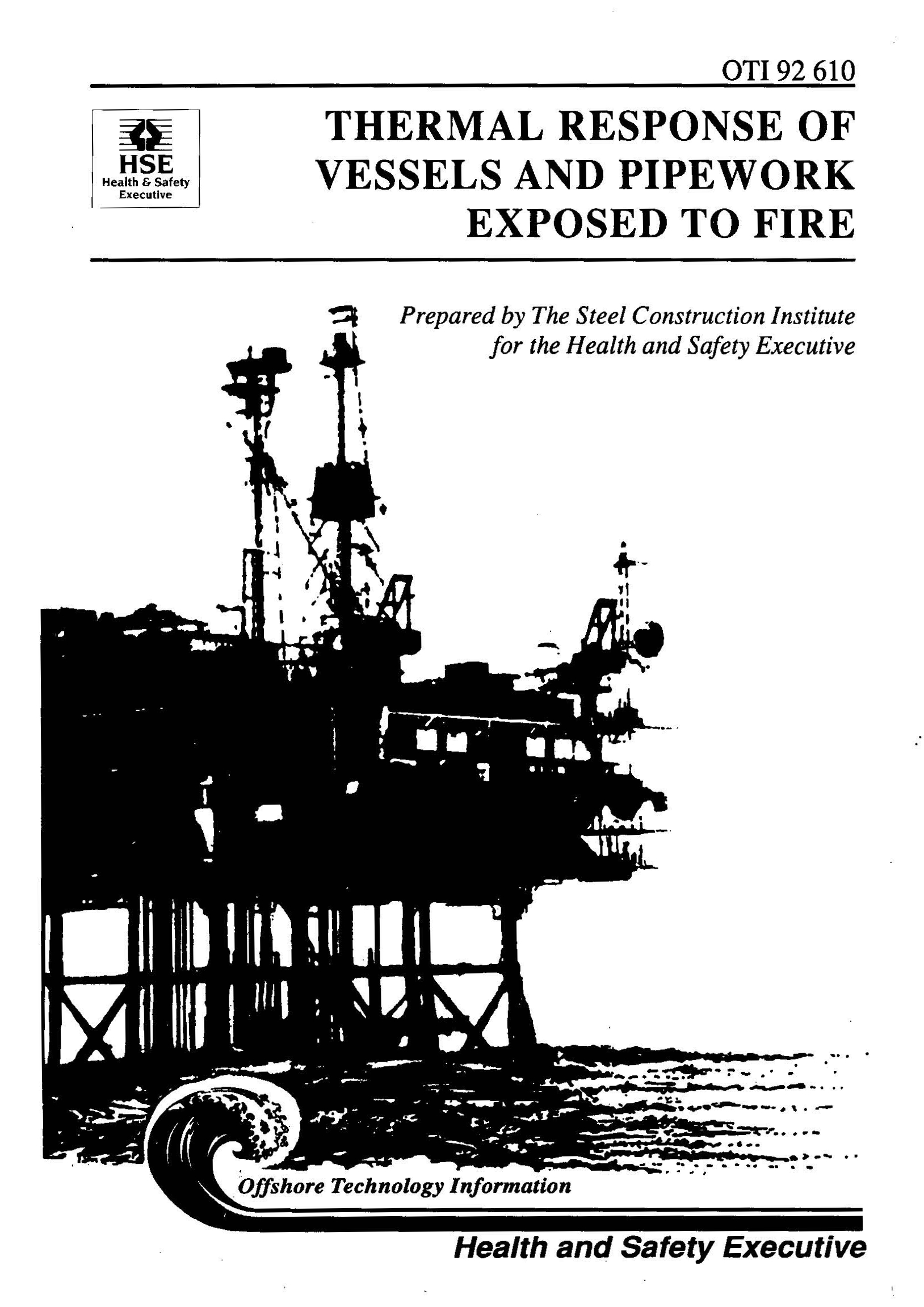HSE OTI 92 610
Thermal response of vessels and pipework exposed to fire
Work Package FR7
BFETS Phase 1

FABIG Members: Log-in to access all FABIG resources LOG IN
SUMMARY
Fire attack of vessels and pipework containing hydrocarbon on offshore platforms can lead to escalation if loss of containment occurs. The appropriate emergency response depends on a firm understanding of the vulnerability of vessels and pipes to different fire types, a ranking of the equipment most at risk, predictions of the time available for countermeasures, and the hazard posed by rupture.
Knowledge of these factors is essential for the safe operation and shutdown of existing facilities, and should influence the design of new platforms.
This report examines the extent of knowledge of the physical processes which take place during fire attack, and compares the predictive capabilities of available models with the requirements. It gives a "snapshot" of the current position, concentrating on information which is within the public domain, and models which have been validated in large fires.
The relevance and applicability of the relationships used to describe physical processes is discussed, and reference is made to sources where the appropriate equations can be found.
This report includes summaries of the current position and areas of uncertainty, but the reader is encouraged to study it as a whole. Where possible the report is self contained, but it draws on findings of other Work Packages, to which reference should be made as appropriate.
The physical processes taking place when pressurised equipment containing hydrocarbons is exposed to a fire are relatively well understood, at least when the fluid is simple, and empirical relationships are available to describe the heat and mass flows. However, for the fluids of interest, which are mixtures such as condensate and crude oils, a physical description is far more complex, and there are many uncertainties.
Modelling the latter subject is very difficult, and has not yet been attempted as a whole. There are predictive computer codes for the simpler situations, and in that role they are satisfactory, but as might be expected, they have only limited application.
One of the most important questions to be answered is the likely time to failure of a vessel or pipe. The available models do not generally predict this, and the subject needs further attention.
It is possible that the existing computer codes can be used to rank vessels and pipework at risk from fire attack, to gain an idea of the relative importance of factors not yet included, and to aid the development of more appropriate models.
A great deal of research and development work may be needed, but it must be well focused to meet pre-identified essential needs on time.
The full report is publicly available from the HSE Website at www.hse.gov.uk/research/otipdf/oti92610.pdf.
Online purchase options:
Non-Members of FABIG are able to purchase PDF copies of the reports.